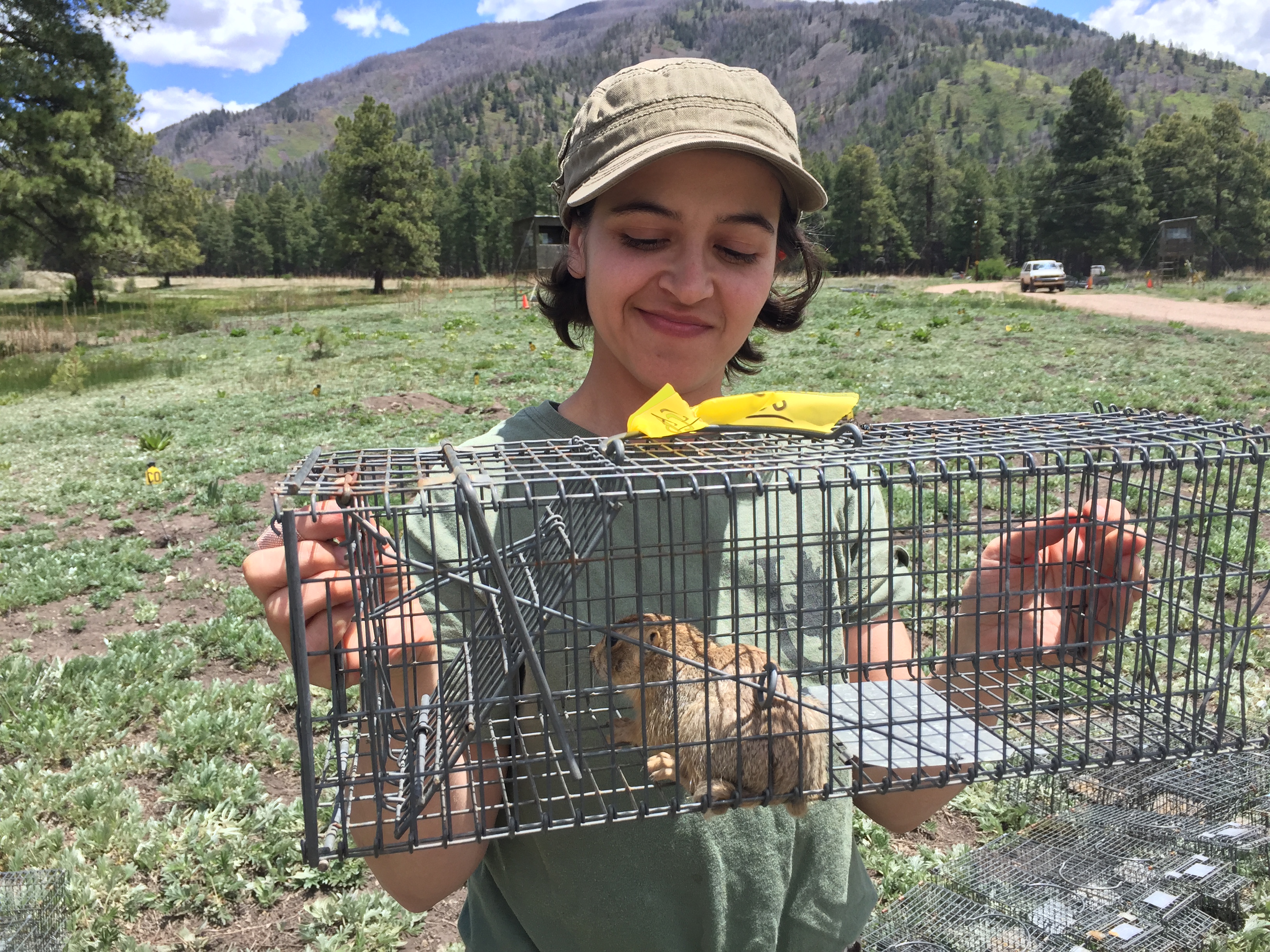
Prairie Dog Study Spans 44 Years and Inspires New Generation of Researchers
The Prairie Dog Project was started by John Hoogland in 1974 and has run continuously over the past 44 years. Hoogland and his team have studied the four species of prairie dog native to the U.S.; the black-tailed, white-tailed, Utah, and Gunnison's, at study sites ranging from North Dakota to New Mexico. The overarching question of the study is, “Why do prairie dogs live in colonies?” This unique quality leads to many implications for the species including challenges such as competition for resources, high potential for disease outbreaks, and other interspecific challenges. There are also benefits including safety in numbers, cooperation at critical life stages, and dynamic social structure. We were recently lucky enough to speak with Mariana Rivera Rodriguez, one of the assistant researchers on the project.
Mariana joined the team in 2016 after moving to northern New Mexico and looking for jobs that would allow her to remain in her new home. The location of the site for the project was so ideal that she would have applied regardless of the species, however, it was a happy coincidence that this is a prairie dog project because Mariana has an obsession with rodents. This fondness began when she completed her senior thesis for her B.S. in wildlife biology studying red squirrels. Mariana’s favorite attributes of squirrels include “hardiness, resourcefulness, endurance, sociality, and charm.” After beginning work on this project, Mariana became even more passionate about working with rodents and plans to continue studying prairie dogs as her career progresses.
This project uses various methods to collect lots of behavioral and biological data about the prairie dogs being studied. A lot of time is spent on observation, which takes place from towers overlooking the colonies. Behavior is recorded and coded for large samples over long periods of time, ensuring that the data collected can be applied to the species as a whole. The research team also trap and mark prairie dogs so they can be easily identified during observation. Additionally, when prairie dogs are trapped, a weight is taken, sex and reproductive conditions are checked, ear tissue is taken for DNA analysis, and ear tags are inserted. If the prairie dog is pregnant, an ultrasound will also be conducted. When asked about how Conseris could contribute to this data collection process, Mariana noted that it would be very useful and that she hopes to incorporate the use of more technology into fieldwork in the future, but sees funding as a current barrier. She hopes that over the next several years technology becomes increasingly common in fieldwork situations.
From the wealth of data collected, the team has been able to learn a lot about the species. One of the findings that Mariana considers to be most significant is the new information collected about the differences among the four species of prairie dogs. This new information about both behavioral and biological characteristics has led to important conservation actions related to specific species. For example, as Mariana explained, “If Genus Cynomys contained only a single species, that single species would not be on the Endangered Species List. The Utah prairie dog, for example, would be just another population in a whole. But we know that the Utah prairie dog is a species on its own and that its population is so beleaguered that it requires special protections under the Endangered Species Act (ESA). If not for our understanding of their differences, we wouldn't have the accurate conservation considerations needed to manage and protect the five species of prairie dog separately depending on their unique geography and circumstances.”
While working on this project Mariana has gained skills in observation and patience. This was her first time working on a behavioral ecology project and as a result, her first time spending long hours in an observation tower. During her work on the project, Mariana was able to become patient enough to do this tedious work without zoning out or losing focus. Additionally, while working on this project, Mariana gained the skills and confidence she needed to feel ready to pursue a graduate degree and she plans to apply in 2018.
When asked about the future of the Prairie Dog Project, Mariana noted that John feels that his time to retire is fast approaching, but that the team is working to find ways to keep the project alive. Mariana hopes to study the repopulation of a collapsed colony of prairie dogs while pursuing a graduate degree. John and Mariana are also working to find ways to ensure that all of the data John has collected can contribute to future studies. While a slightly uncertain time, Mariana is very excited about these upcoming changes.
As an ending piece of advice for aspiring zoologists, Mariana says “be humble and be creative.” She noted that in this field you will work with and work for people of all ages, demographics, and cultures so there will be roadblocks. She emphasizes facing these roadblocks with creative problem solving while ensuring that you maintain a humble attitude.
If you want to learn more about the Prairie Dog Project you can visit its website, which has a wealth of information about the study. Mariana recently began maintaining the site, which combines her knowledge of communication and technology with her love for science. As a result, the site serves as an amazing resource for those looking for more information. Additionally, Mariana noted that the project looks for new research assistants every year. Keep an eye on the Texas A&M job boards in December if you would like to apply and have the opportunity to learn from John before he retires. At Conseris, we love supporting dedicated researchers like John, Mariana, and their team. Start a free-trial today and see how Conseris can improve your methods.
